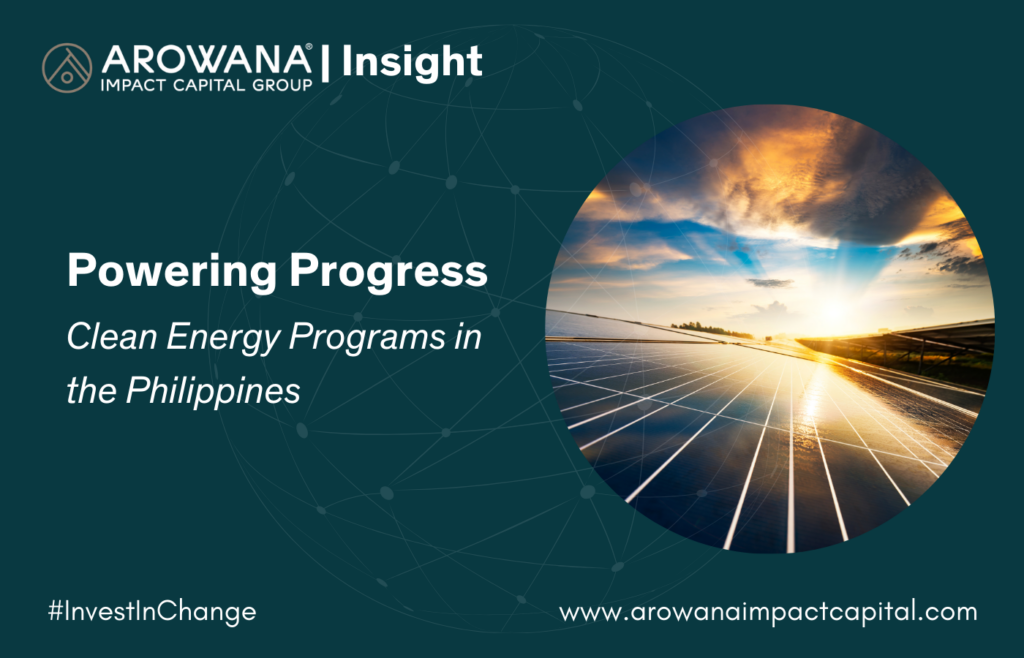The Philippines is riding the wave of a clean energy revolution, blending policy reforms, international partnerships, and strategic investments to reshape its energy landscape. With ambitious targets—35% renewable energy in the power mix by 2030 and 50% by 2040—the country is positioning itself as a leader in the Southeast Asian green energy movement. Here’s how it’s happening.
The National Renewable Energy Program (NREP): The Blueprint for Change
At the centre of the Philippines’s strategy is the National Renewable Energy Program (NREP), a comprehensive roadmap for clean energy expansion. This program sets aggressive targets for various renewable sources:
- Geothermal Power: A 75% capacity increase by 2027, leveraging the Philippines’ position as the world’s second-largest geothermal producer.
- Hydropower: Aiming for a 160% expansion, focusing on small-to-medium run-of-river and reservoir projects.
- Wind Energy: Setting a 7.4 GW new capacity target by 2030, with offshore wind farms in Western Visayas.
- Solar Energy: A whopping 17.8 GW goal by 2030, driven by floating solar farms and distributed rooftop systems.
With these initiatives, the Philippines is tapping into its rich natural resources while reducing reliance on fossil fuels.
Incentives for Investors: Making Renewable Energy a Smart Business Choice
To attract investors, the government has rolled out a range of financial and regulatory incentives:
- Tax Breaks & Import Benefits: Renewable energy projects enjoy income tax holidays, VAT exemptions, and duty-free equipment imports.
- Open for Business: Since 2022, 100% foreign ownership of renewable projects has been permitted, encouraging international developers to invest in the country’s clean energy transition.
- Reverse Auctions: Instead of fixed feed-in tariffs, a competitive bidding system was introduced in 2019, driving costs as low as $0.044/kWh for solar energy.
With these financial incentives in place, renewable energy is more attractive than ever for businesses and investors.
Key Initiatives: Building a Sustainable Energy Future
Green Energy Option Program (GEOP): Empowering Consumers
The Green Energy Option Program (GEOP) allows businesses and consumers with a peak demand of ?100 kW (think hospitals, factories, malls) to purchase 100% renewable energy—bypassing fossil fuel-dependent utilities. This initiative gives consumers control over their energy sources, reducing dependence on traditional power grids and accelerating the shift to renewables.
Responsible Energy Initiative (REI): Ensuring Ethical Energy Development
While expanding renewable energy is critical, it must be done responsibly. The Responsible Energy Initiative (REI) Philippines ensures that renewable projects respect environmental and social safeguards. This effort tackles issues like Indigenous displacement and biodiversity loss, with a 2023 situational analysis guiding equitable deployment of clean energy projects.
Regional Project Acceleration: Scaling Clean Energy Nationwide
Certain regions are emerging as renewable energy hotspots:
- Western Visayas: Home to 68 renewable projects with a combined 14.2 GW capacity, including 17 offshore wind and 24 hydropower developments.
- REP-AFS: The Renewable Energy Program for Agriculture/Fisheries focuses on solar, biomass, and small-scale geothermal energy solutions for rural industries.
These regional initiatives ensure that the clean energy transition benefits the entire nation, including remote and agricultural areas.
Emerging Strategies: Innovations Shaping the Future
Grid Modernisation: Strengthening Energy Infrastructure
A modernised power grid is crucial for integrating renewable energy. With 1,087 approved projects nationwide as of 2023, the focus is on energy storage, mini-grids, and smart grid technology—critical for maintaining stable power supplies in a renewable-driven energy landscape.
Marine Energy: Unlocking the Power of the Ocean
The Philippines, an archipelago of over 7,000 islands, has immense marine energy potential. Pilot ocean energy projects are now being explored, including tidal and wave power initiatives. If successful, these could provide a significant and sustainable energy source for coastal communities.
Challenges and the Road Ahead
Despite the progress, challenges remain for the Philippines’ clean energy industry. Grid intermittency, land-use conflicts, and financing hurdles continue to pose obstacles. However, with regulatory reforms, foreign investment, and community-driven initiatives, the Philippines is proving that a clean energy future is not just an aspiration—it’s an achievable reality.
For investors looking to make a real impact, the Philippines offers one of the most dynamic renewable energy markets in the world. By aligning business strategies with the country’s clean energy goals, impact investors can drive both profitability and sustainability—powering not just businesses, but the nation’s future.
For more news and insights, stay tuned to the AIC website.

